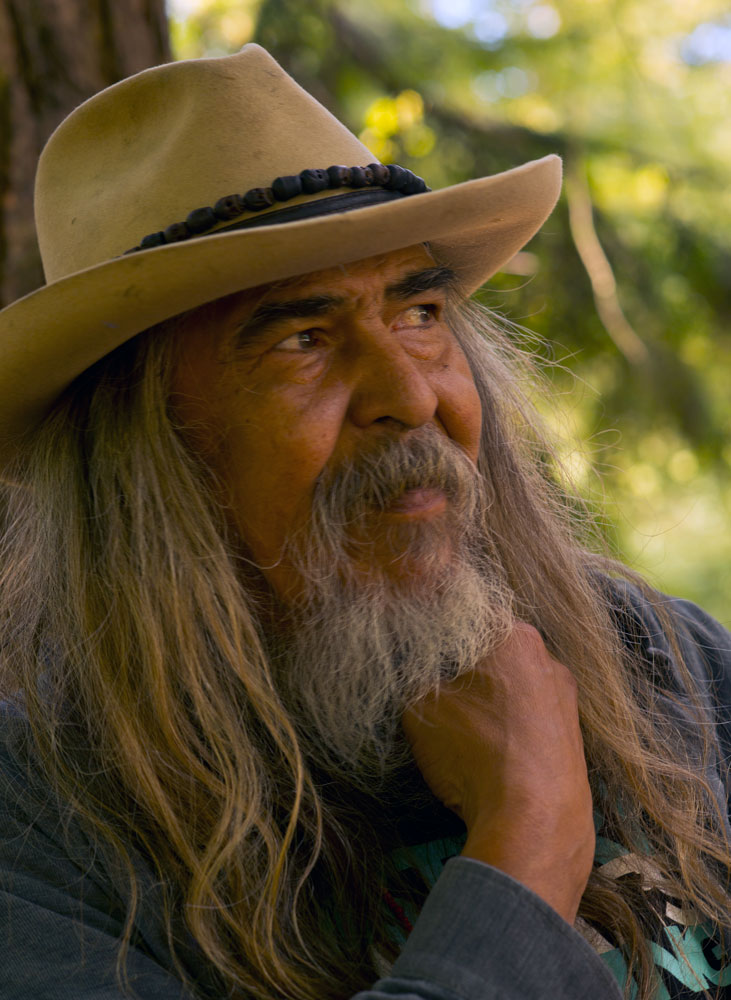The Newsroom
Excerpt: “Beau Dick” – The Artist
The Artist
Beau Dick’s practice spans more than four decades and includes carving, painting, drawing, textiles, sculpture, and installation. He effortlessly navigated between the traditional and contemporary art worlds, striving to create a unique and personal artistic voice. His interests were vast and diverse. He studied the masks and carvings created by his ancestors, as well as those from outside the Kwakwaka’wakw culture. He read as much as he could about his Nation’s artistic heritage, and explored of many West Coast First Nations. Dick’s interests were not limited to Indigenous art; he studied Western masters such as Caravaggio, believing that knowledge and insight into the creative mind could be gained from many different cultures and practitioners. Evidence of this can be seen in the wide array of styles Dick created, from Egyptian to Haida to Nuu-chah-nulth to Tsimshian. He found value in learning new and innovative approaches to creating art and applying them to his own practice—never copying but rather incorporating approaches and techniques to make his own work more engaging.
When carving a mask, Dick worked extremely fast. He would warn people to stand back as he started, sending woodchips flying throughout the studio as he chopped out the form. Dick worked instinctively. Although he sometimes created “guidelines” for others to follow, they were fluid and would often change during the course of a carving. Dick showed a particular interest in capturing unique expressions, and then enhancing the work by incorporating non-traditional materials or pigments. In this way, his strong traditional cultural roots and expansive art historical knowledge were combined with a strong innovative spirit. His goal was to grow and advance the approaches and ideas associated with contemporary Indigenous art. This can be seen clearly in the work he created for the art market. Each piece is carefully considered, meticulously executed, and presented for maximum effect—a very different approach from his work for potlatch ceremonies.
It is widely known in the Kwakwaka’wakw community that Dick coined a phrase specifically to describe the carvings he created for potlatch—“potlatch perfect.” The expression is not meant as a term of derision or an insult; rather, it references a series of works (often masks that are not market-ready) created for use within a potlatch celebration. Dick was aware that this type of artwork did not have to be detailed in order to be effective. Masks, along with regalia, music, dancing, and atmospheric lighting, contribute to creating a ceremonial space for the sharing of stories within the Big House. Some believe that these “rough” objects are actually closer to the types of works created and used by the ancestors of the Kwakwaka’wakw Nation. Beau Dick revelled in the excitement that was created when several masks had to be carved within a few days before the potlatch. The challenge was always embraced and the works completed.
Whether creating objects for a potlatch, a collector, or the commercial market, Beau Dick’s passion and engagement with his subject matter was reflected in the diversity of his practice and his approach to subjects that resonated with him.
Beau Dick: Revolutionary Spirit by Darrin J. Martens is available now. The exhibition is currently on display at the Audain Art Museum in Whistler.
